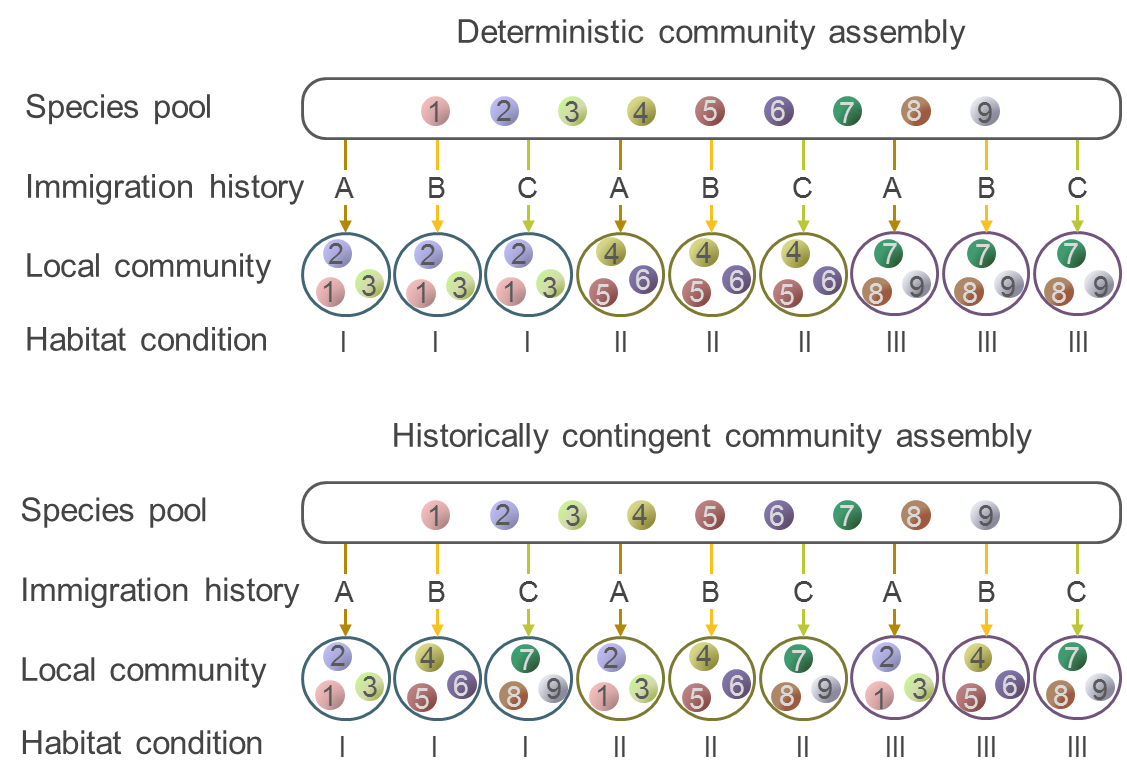Historical contingency in community assembly
The main focus of my research is historical contingency in the assembly of ecological communities. We know that some communities develop toward a single final state regardless of community assembly history, with a deterministic composition of species that can be predicted from environmental conditions. However, the species membership and ecosystem functioning of some communities seem highly contingent on the history of species immigration. This contingency happens because the order and timing in which species immigrate determine the way species affect one another in communities, the phenomenon known as priority effects.
 © 2011 T. Fukami, modified from Fukami 2010
© 2011 T. Fukami, modified from Fukami 2010
In my early work, I found that priority effects could be strong enough to modify major patterns of biodiversity, including species–area relationships (Fukami 2004), productivity–diversity relationships (Fukami and Morin 2003), local–regional richness relationships (Fukami 2004), and boom-and-bust patterns of evolutionary diversification (Fukami et al. 2007). Moreover, priority effects are often essential to consider in restoring and managing ecosystems that are degraded by anthropogenic disturbances, such as habitat fragmentation (Zee and Fukami 2015), increased climatic variability (Tucker and Fukami 2014), and antibiotic application (Sprockett et al. 2018).
Despite these issues indicating the significance of priority effects, a coherent framework that can systematically predict which communities will be historically contingent and which will not is still lacking (Fukami 2015). To build this framework, I am continuing to work with my collaborators on functional consequences, evolutionary dynamics, transient states, and niche-based predictions. This work involves a combination of observational, experimental, and theoretical methods applied to a variety of microbes, plants, and animals.